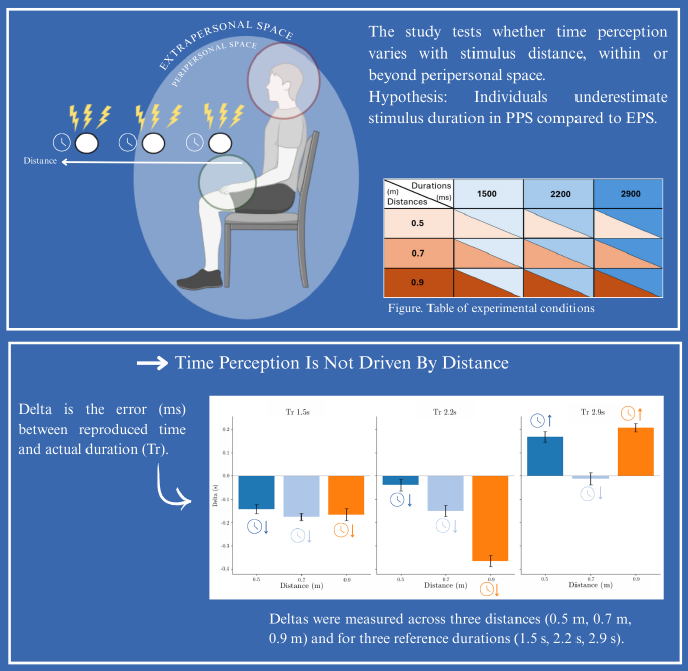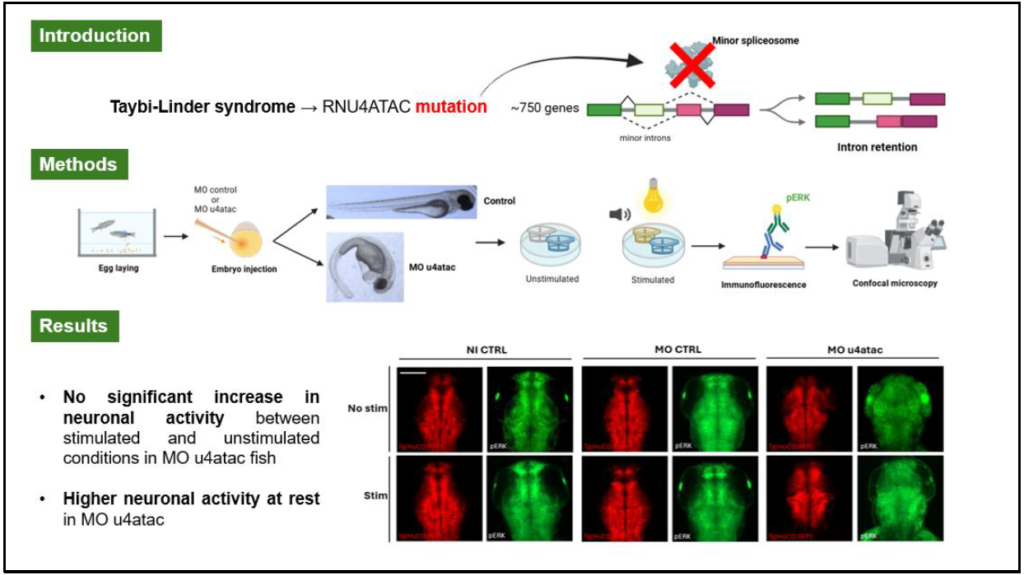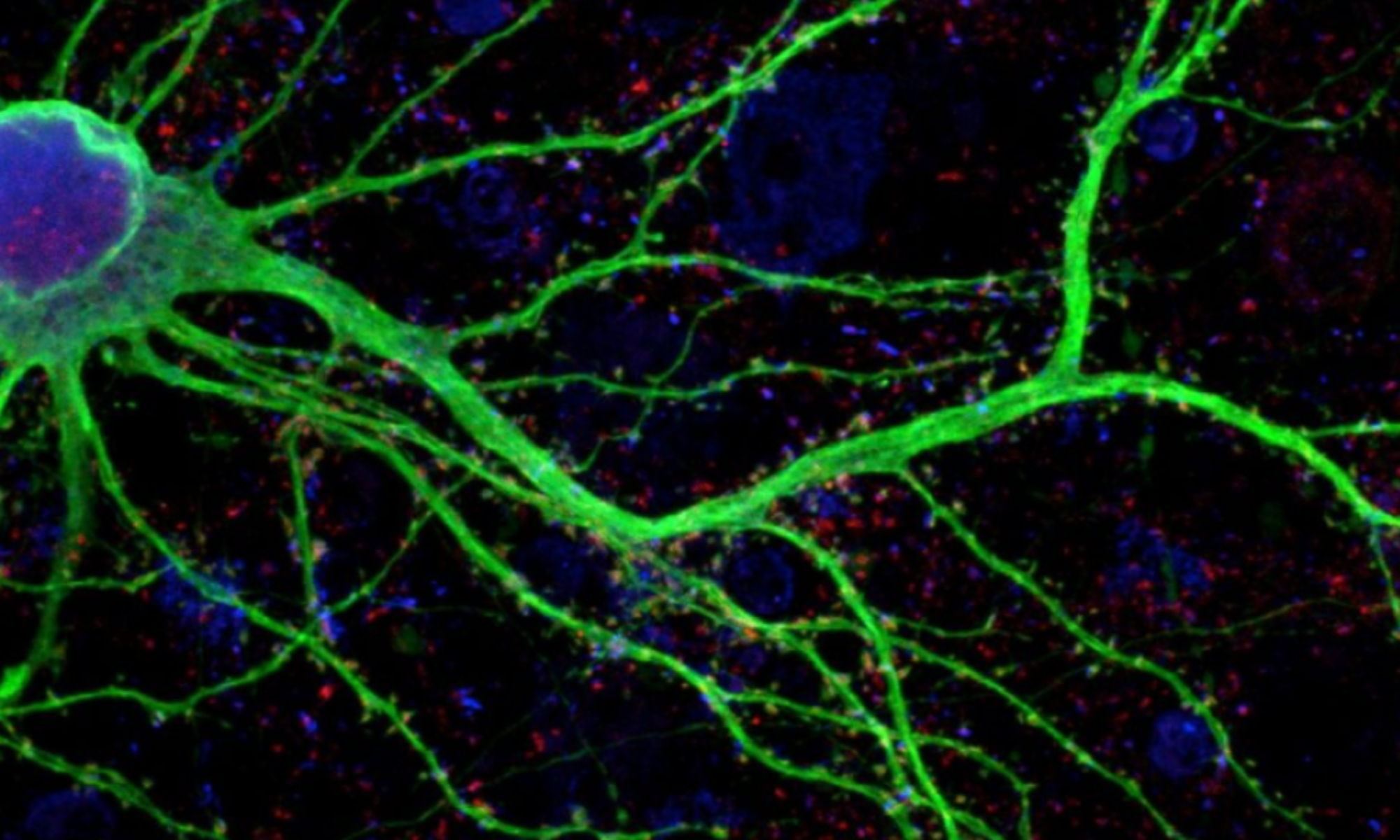The projects that the M1 students carried out in the context of the optional teaching unit « Training on Platforms » in 2024-25
Brain implement prediction in perception when facing ambiguous stimuli (MEG platform)
Students: Yuanqi GU and Jules CRAWLEY-MONNIER
Supervisors: Mathilde BONNEFOND, Danila SHELEPENKOV & Viktoriya MANYUKHINA
Perceptual switching in bistable images, such as the Rubin face–vase illusion, has been proposed to reflect fluctuations in top-down predictions in the absence of bottom-up prediction error, consistent with the Bayesian Brain Model of predictive coding. This pilot MEG study investigated alpha–beta phase coherence and power between higher-order visual areas, and the occipital lobe during perceptual transitions. Two healthy adult participants were presented with Rubin face–vase stimuli in a block design while reporting perceptual switches via button press. Time–frequency analyses were applied to detect power and coherence changes preceding switches, a cluster-based permutation analysis was employed to detect the significance. Contrary to the hypothesis, subject 1 showed no consistent increase in prestimulus alpha–beta coherence between higher- and lower-order visual regions. However, subject 2 showed significantly increased alpha-beta coherence between higher- and lower-order visual regions. These results likey to indicate attentional processes and sexual dimorphism highlight the need for refined experimental design, including clearer task instruction and greater sample size and/or gender separation to better isolate top-down predictive dynamics in bistable perception.
Peripersonal space and Time perception: a distant relationship (NeuroImmersion platform)
Students: CHACON V., LOQUET J. and VIEIRA N.
Supervisors: Alessandro FARNÈ and Clément DESOCHE
Peripersonal space (PPS) is the immediate space around the body within one’s reach. Its neural substrates overlap with those involved in time perception, within the prefrontal cortex, such as the ventral intraparietal area, where visual-tactile neurons have been identified. Although there are common brain areas for both time perception and PPS and both are important for an organism’s survival, there is limited information regarding the variation of time perception between the interior and exterior of PPS. The proposed hypothesis is that the time error estimation will be higher outside the PPS, compared to inside, by using a visual task deployed in a virtual reality (VR) environment with a stimulus that appears at three distance levels during three duration levels. Aligned Rank Transform and Linear Mixed Model analyses reveal that participants reproduced durations reliably and show a strong effect of duration on estimation error with mostly underestimation. There is no support for spatial modulation of time perception under neutral conditions. The effects of PPS on time perception may require emotional, action-related, or dynamic stimuli. Future directions must account for these factors.

Effects of TaybiLinder syndrome on neuronal activity : investigation through u4atac morpholino on zebrafish model ("brain function in zebrafish" platform)
Students: Tessa TRIMAILLE, Lise VALLET and Antonia ROZIER
Supervisors: Marion DELOUS and Anne MEILLER
Taybi-Linder syndrome is a rare genetic disease affecting the immune and skeletal systems but also inducing neurodevelopmental malformations like microcephaly reducing drastically life expectancy. This syndrome’s cause is a mutation in the RNU4ATAC gene. This gene encodes for U4atac, a small nuclear RNA which is part of the minor spliceosome. The role of the minor spliceosome is the splicing of U12 introns, also called minor introns. Mutation in RNU4ATAC gene impairs the minor spliceosome functioning and consequently, the minor intron owning genes expression. As several minor intron owning genes have been identified to be involved in neuronal activity regulation, we wanted to characterize neuronal activity when U4atac is mutated. For this purpose, we used the zebrafish model and mutated the gene with a morpholino approach (MO). Fish were stimulated with sound and light flash before neuronal activity was quantified using pERK, a well-established marker of activity. No significant differences were found when comparing MO u4atac unstimulated and stimulated subgroups. Also, contrary to our expectations, MO u4atac larvae exhibited a higher neuronal activity overall compared to control conditions. This hyperexcitability could be related to the epileptic discharge pattern observed in u4atac MO fishes in previous studies.

